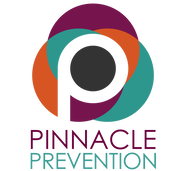|
We have been overwhelmed by the incredible support for our recently launched Pots to Love program. As we wrap up another week, here is a look back at a topic we’ve discussed before: food insecurity and its impact on senior citizens. The Pots to Love program helps seniors and other in-need Arizonans get the kitchen tools they need to cook nourishing meals at home, but there is still a lot of work to be done to ensure our elderly neighbors aren’t bearing the weight of hunger. Senior Citizens Weighed Down by Food Insecurity Food insecurity and hunger affect far too many Arizonans, including some of our population’s most vulnerable: senior citizens. 46 million people in the U.S. are over the age of 65. Of that 46 million, 2.8 million seniors live in food-insecure households, and an additional 1.2 million seniors who live alone are also food-insecure. Arizona is home to 1.1 million seniors. 15.4 percent of those seniors are food insecure. Although there are programs and organizations working to aide these community members, a lack of knowledge and stigmas surrounding food assistance are inhibiting true progress.
There are several factors that increase a senior's risk for food insecurity. Seniors who are people of color, unemployed, live alone, and/or have a disability are at a greater risk of food-insecurity and hunger. The risk also increases if they are recently divorced or did not complete higher education. Living in Arizona can be a risk as well. Arizona is plagued with food deserts, or areas that have low or no access to grocery stores or markets. For senior citizens with mobility issues, food deserts can be even more dangerous and taxing. These hardships and limited access can be reduced with the Supplemental Nutrition Assistance Program (SNAP). SNAP/EBT (formerly food stamps) can be an excellent way to combat food-insecurity within this age group. The program offers year-round support to older people. It also connects senior community members to nutritious food that is essential to their health. Because SNAP can only be used for food, it can reduce the pressure to make tough decisions like choosing between medication or eating. Double Up Food Bucks Arizona helps stretch these benefits even further, and helps customers bring home more fresh, healthy produce. Many senior citizens could benefit immensely from programs like SNAP, but only 42 percent of eligible seniors choose to participate in it. Unfortunately, SNAP is heavily stigmatized and messaging about the program sometimes is not received well. Also, mobility challenges and a lack of resources and accurate information can prevent older people from getting the help they need. Supporting policy and initiatives that increase senior citizens’ access to food can help fight food insecurity. As we get older, the importance of our health grows. Food-insecurity and hunger have negative impacts on the health of seniors. With everyone’s help, seniors can live healthier lives without food hardships.
0 Comments
Leave a Reply. |
Pinnacle Prevention BlogFollow our blog for tips, insights and conversations about healthy living. Archives
June 2024
Categories
All
|
Location |
|


